Abstract
The immune response after streptococcal infection of the skin and of the upper respiratory tract (URT) was studied prospectively in a group of normal children, ages 3-6 yr. The children were examined and cultures for group A streptococci were obtained weekly from the throat, nose, and skin lesions (when present). Paired sera were collected at the beginning and end of the study, and the changes in antibody titers were measured for three different streptococcal antigens: streptolysin O, deoxyribonuclease B (DNAse B), and nicotinamide adenine dinucleotidase (NADase).
The findings suggest that in contrast to infection of the URT antibody response to streptolysin O is relatively feeble after streptococcal infection which is limited to the skin. The response to NADase is also poor after cutaneous infection. Antibody responses to DNAse B are generally good regardless of the site of the infection. These and other studies indicate that anti-DNAse B is the antibody of choice in studying streptococcal infection of the skin and its complications.
Full text
PDF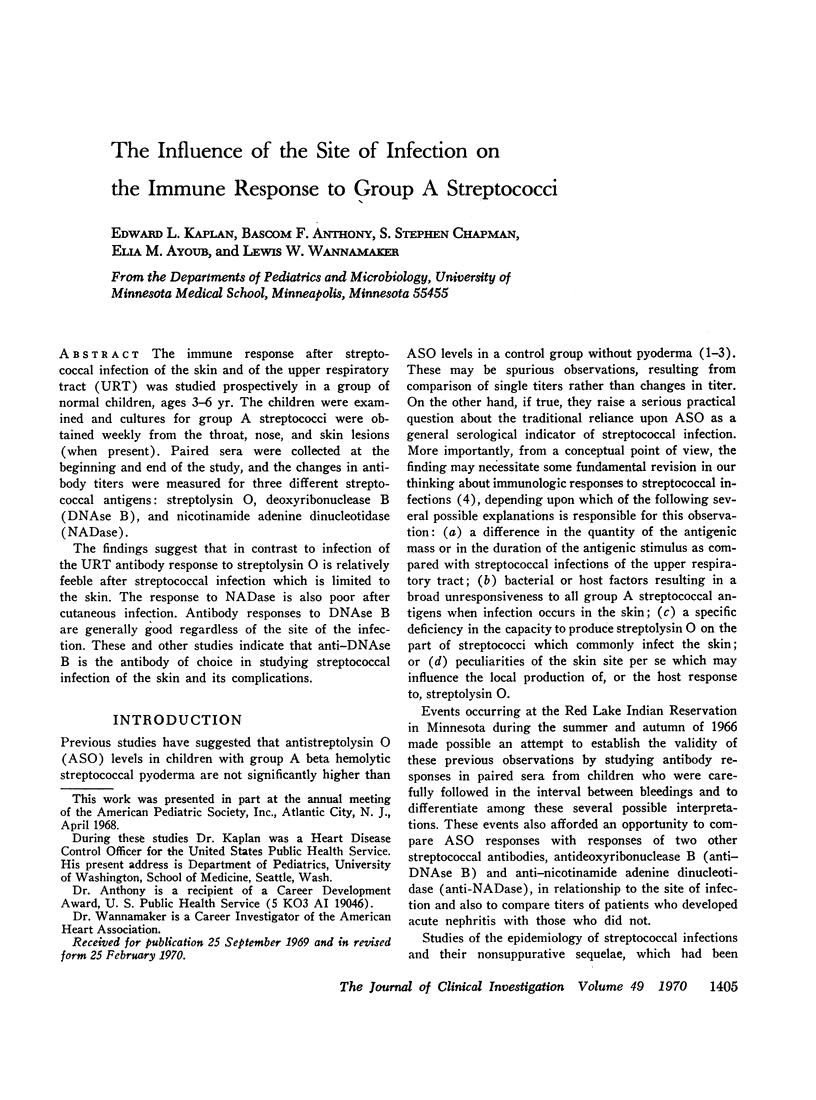
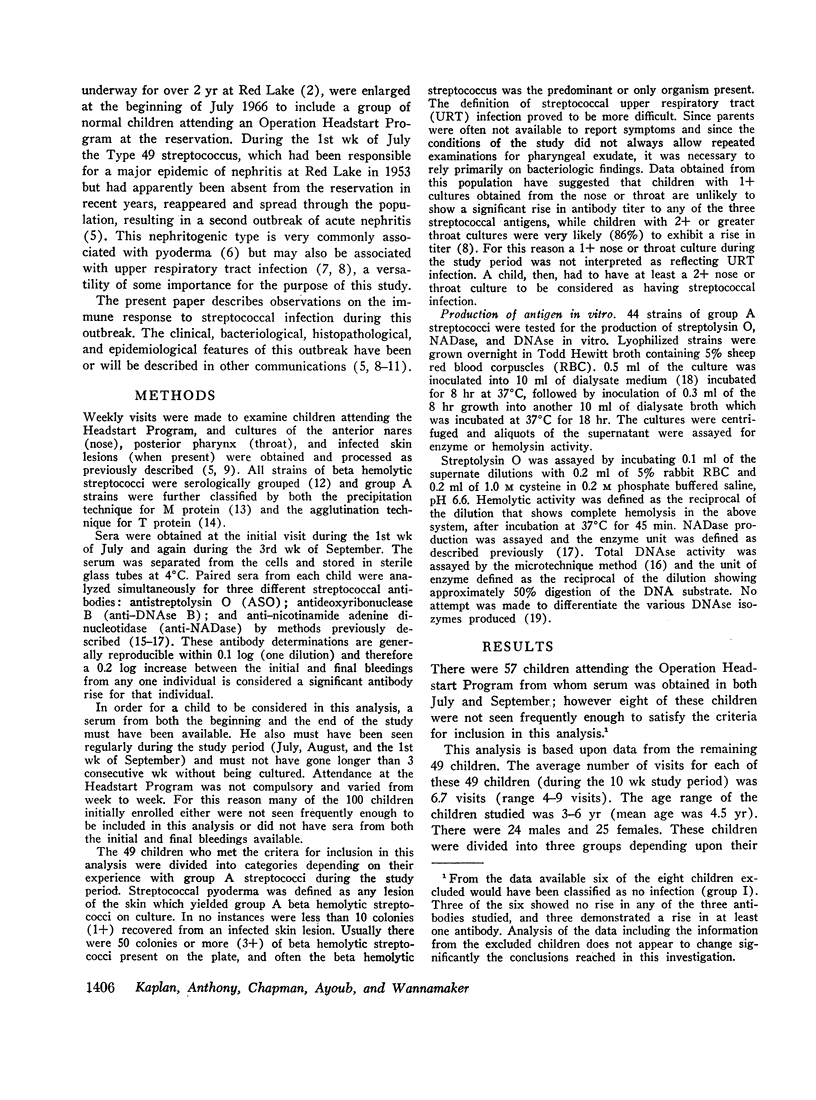
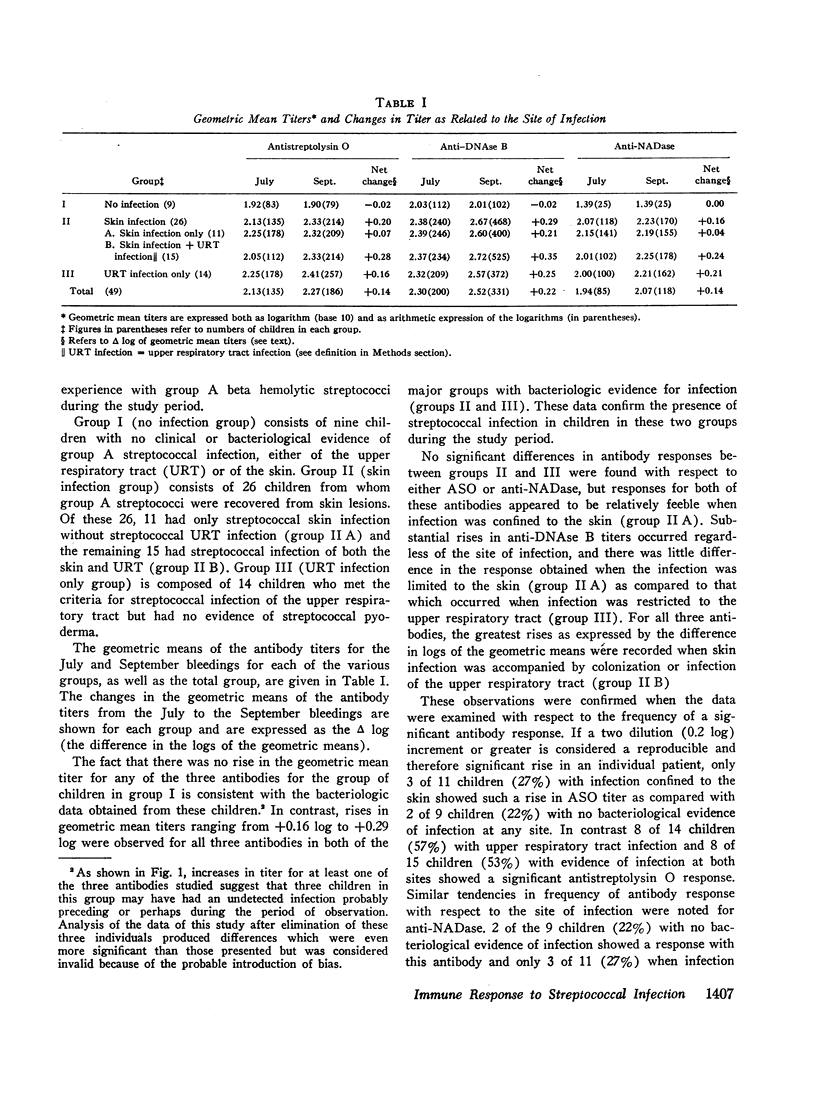
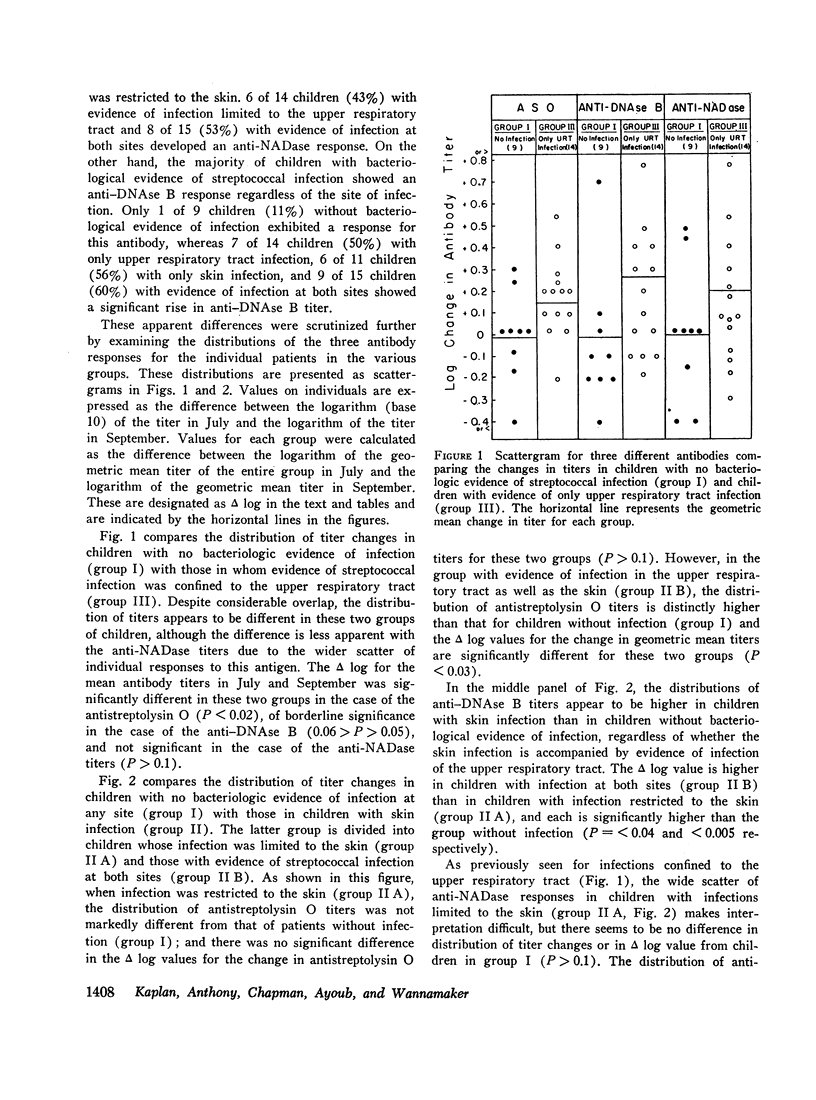
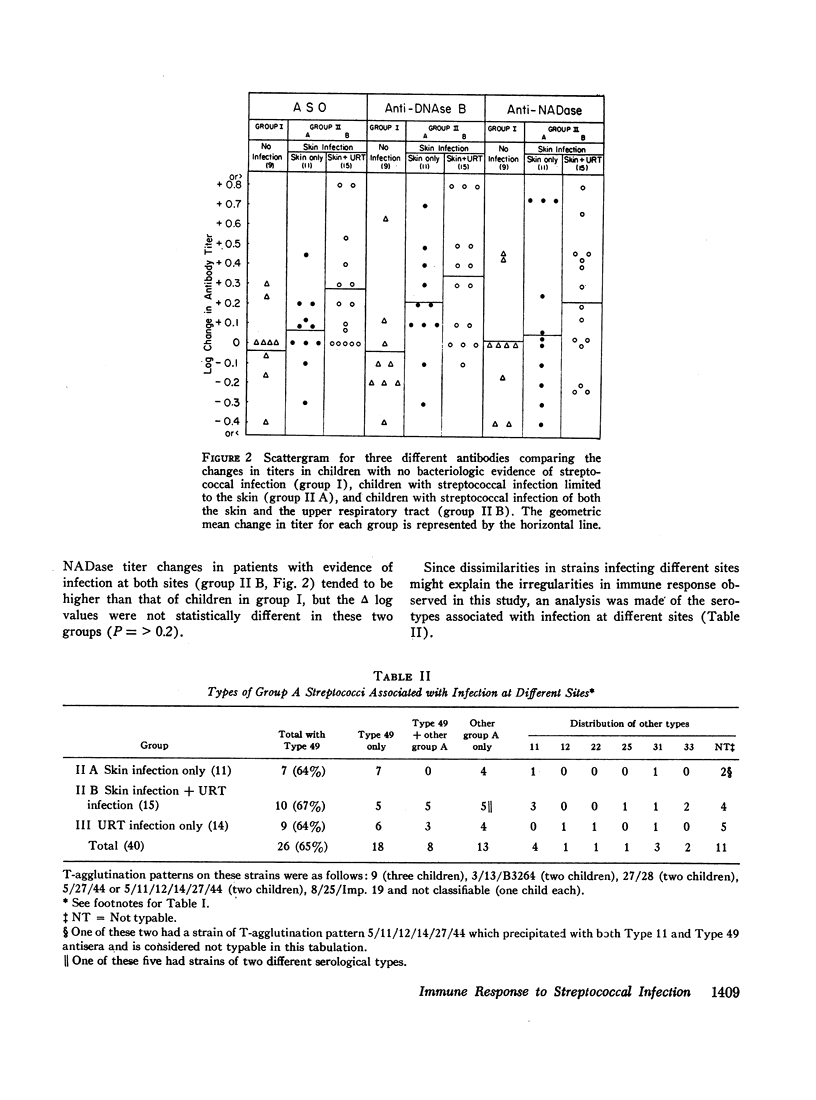
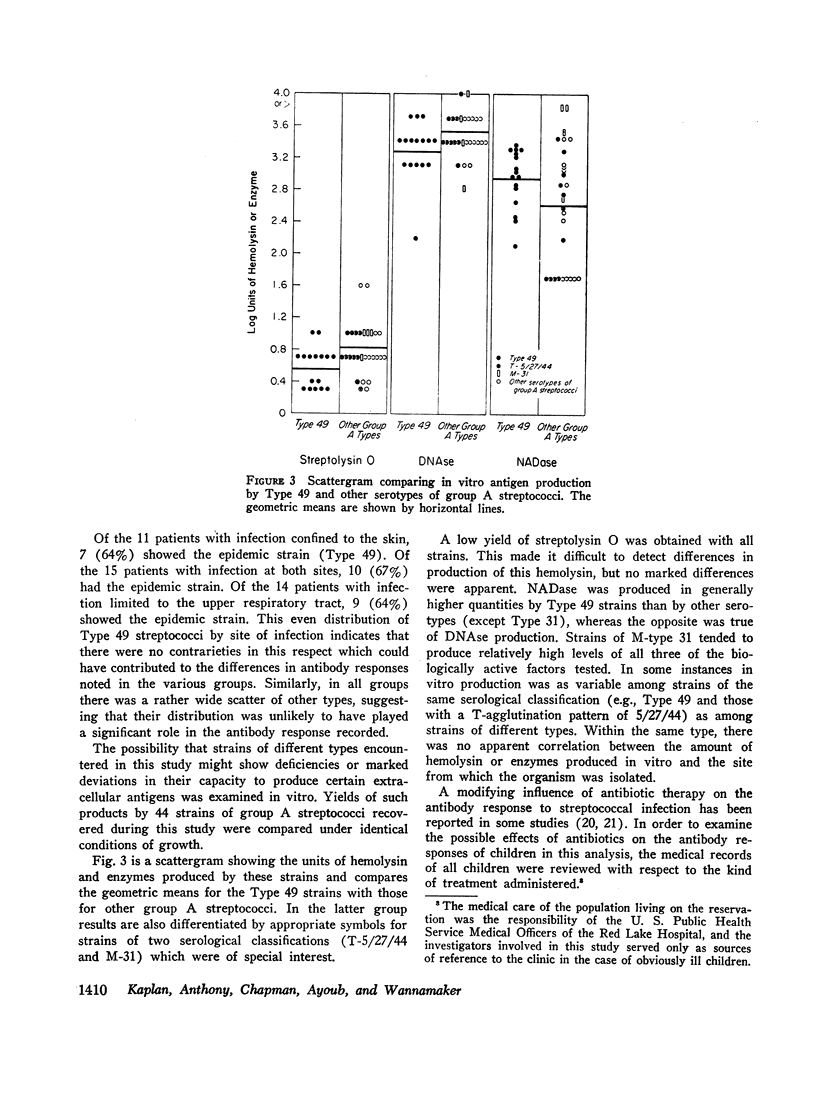
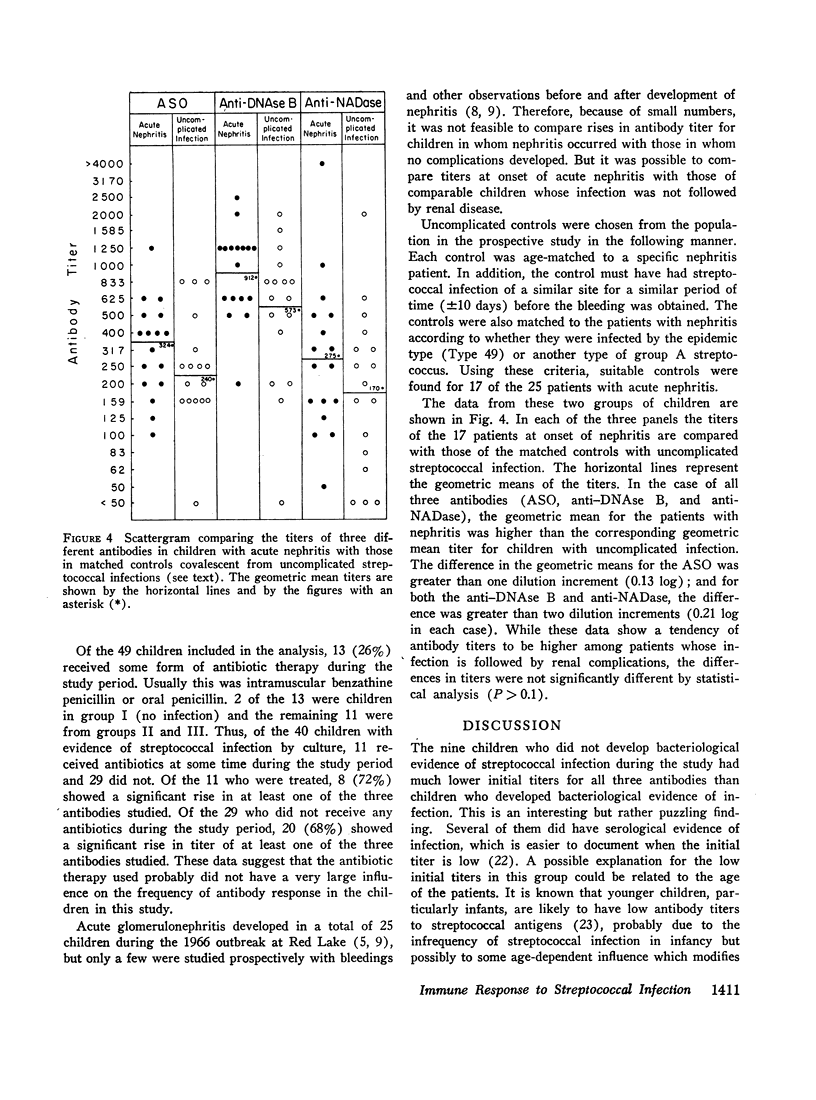
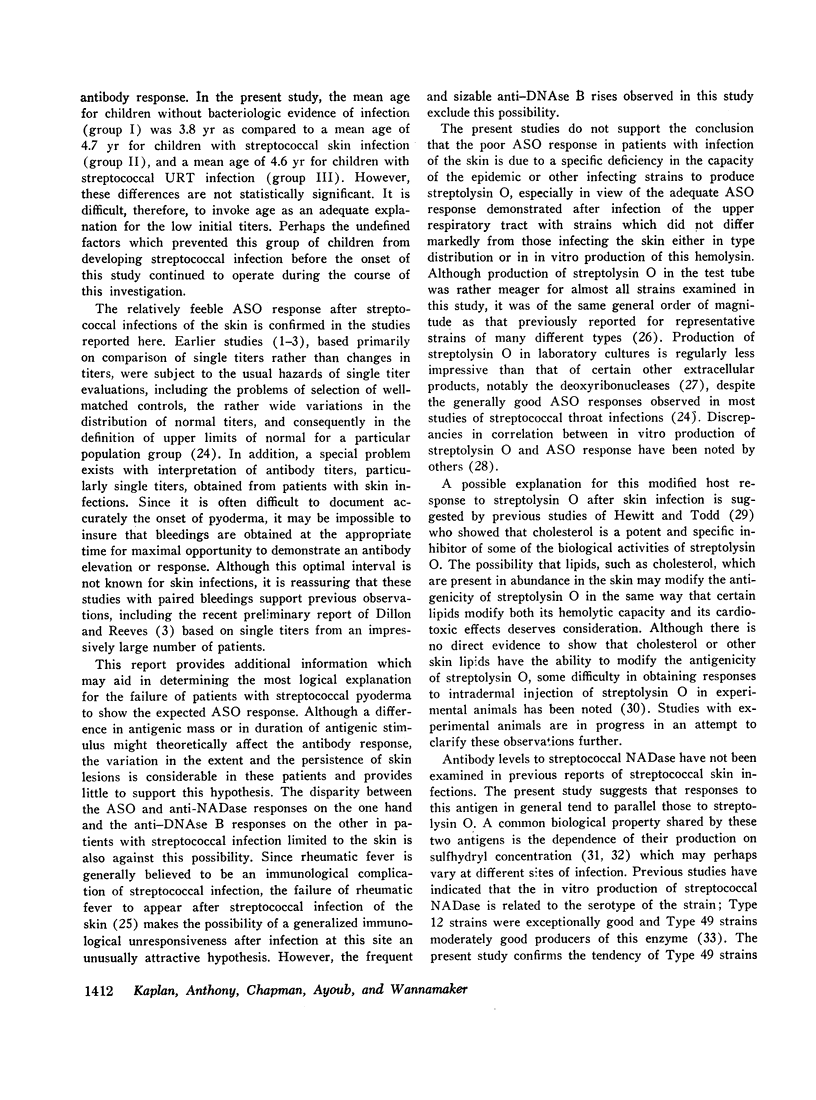
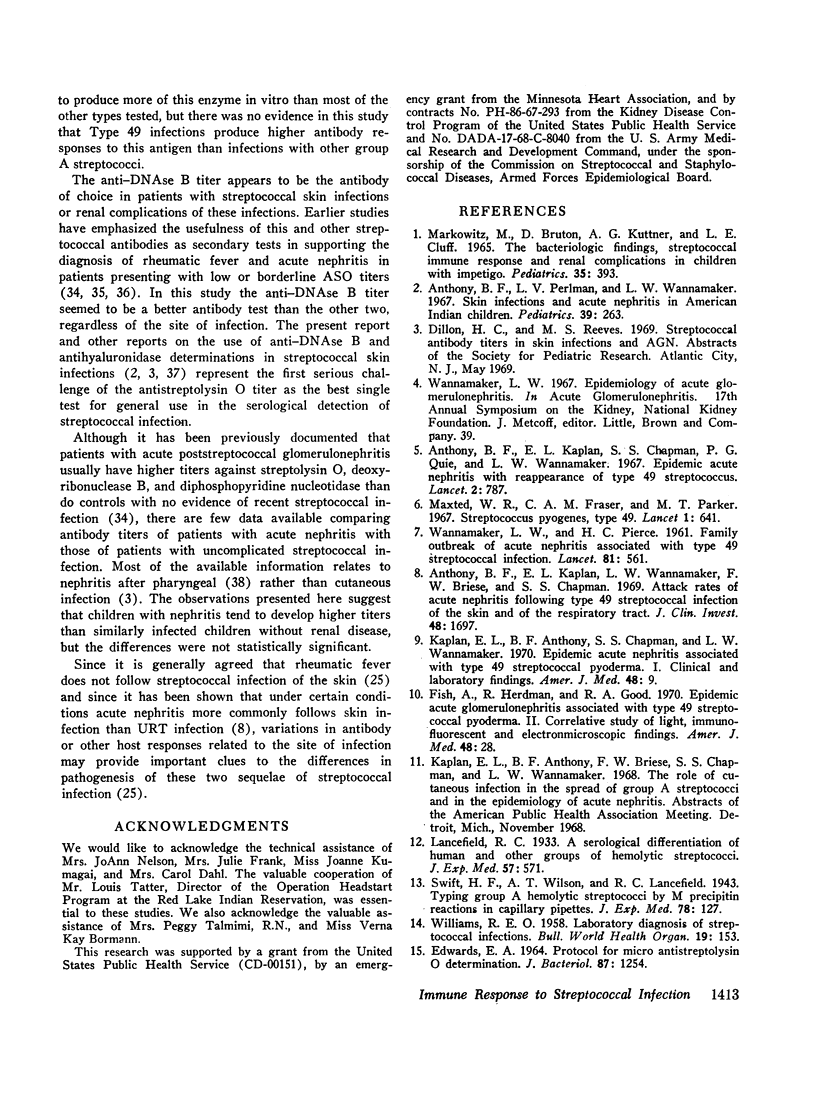
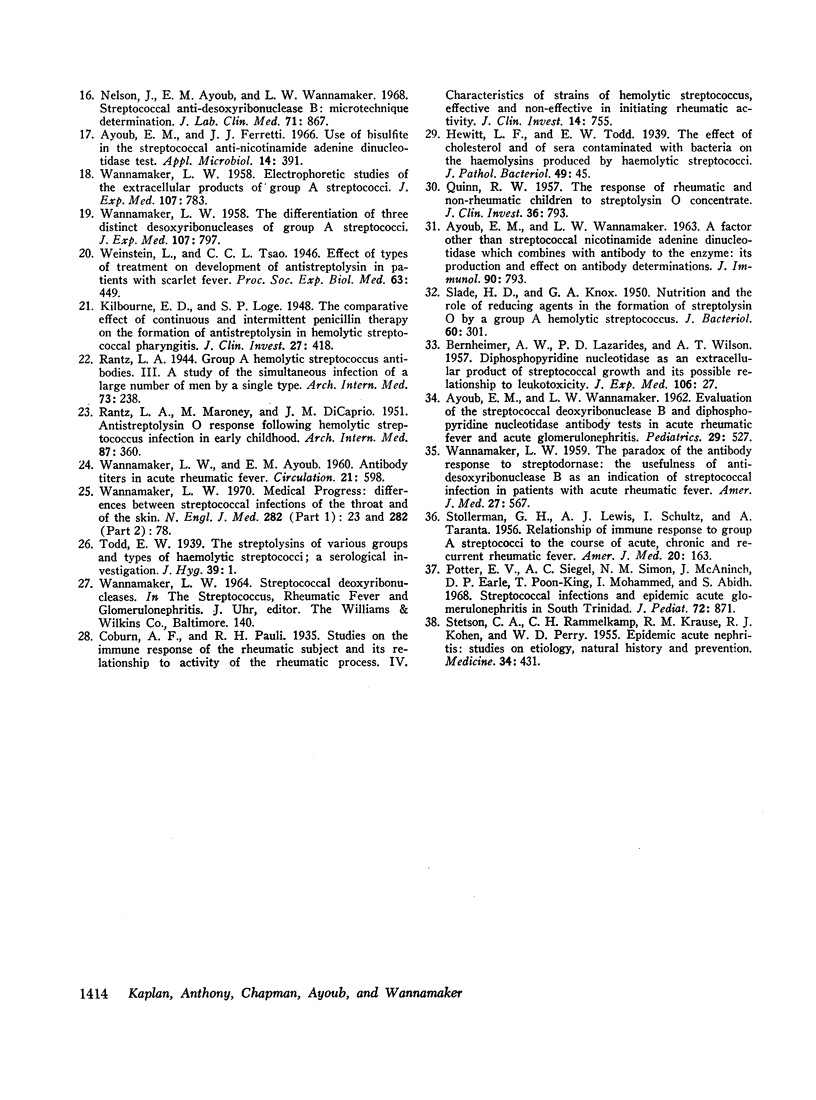
Selected References
These references are in PubMed. This may not be the complete list of references from this article.
- AYOUB E. M., WANNAMAKER L. W. A FACTOR OTHER THAN STREPTOCOCCAL NICOTINAMIDE ADENINE DINUCLEOTIDASE WHICH COMBINES WITH ANTIBODY TO THIS ENZYME: ITS PRODUCTION AND EFFECT ON ANTIBODY DETERMINATIONS. J Immunol. 1963 May;90:793–803. [PubMed] [Google Scholar]
- Anthony B. F., Kaplan E. L., Wannamaker L. W., Briese F. W., Chapman S. S. Attack rates of acute nephritis after type 49 streptococcal infection of the skin and of the respiratory tract. J Clin Invest. 1969 Sep;48(9):1697–1704. doi: 10.1172/JCI106135. [DOI] [PMC free article] [PubMed] [Google Scholar]
- Anthony B. F., Perlman L. V., Wannamaker L. W. Skin infections and acute nephritis in American Indian children. Pediatrics. 1967 Feb;39(2):263–279. [PubMed] [Google Scholar]
- Ayoub E. M., Ferretti J. J. Use of bisulfite in the streptococcal anti-nicotinamide adenine dinucleotidase test. Appl Microbiol. 1966 May;14(3):391–393. doi: 10.1128/am.14.3.391-393.1966. [DOI] [PMC free article] [PubMed] [Google Scholar]
- BERNHEIMER A. W., LAZARIDES P. D., WILSON A. T. Diphosphopyridine nucleotidase as an extracellular product of streptococcal growth and its possible relationship to leukotoxicity. J Exp Med. 1957 Jul 1;106(1):27–37. doi: 10.1084/jem.106.1.27. [DOI] [PMC free article] [PubMed] [Google Scholar]
- Coburn A. F., Pauli R. H. STUDIES ON THE IMMUNE RESPONSE OF THE RHEUMATIC SUBJECT AND ITS RELATIONSHIP TO ACTIVITY OF THE RHEUMATIC PROCESS. IV. CHARACTERISTICS OF STRAINS OF HEMOLYTIC STREPTOCOCCUS, EFFECTIVE AND NON-EFFECTIVE IN INITIATING RHEUMATIC ACTIVITY. J Clin Invest. 1935 Nov;14(6):755–762. doi: 10.1172/JCI100723. [DOI] [PMC free article] [PubMed] [Google Scholar]
- Edwards E. A. Protocol for micro antistreptolysin O determinations. J Bacteriol. 1964 May;87(5):1254–1255. doi: 10.1128/jb.87.5.1254-1255.1964. [DOI] [PMC free article] [PubMed] [Google Scholar]
- Fish A. J., Herdman R. C., Michael A. F., Pickering R. J., Good R. A. Epidemic acute glomerulonephritis associated with type 49 streptococcal pyoderma. II. Correlative study of light, immunofluorescent and electron microscopic findings. Am J Med. 1970 Jan;48(1):28–39. doi: 10.1016/0002-9343(70)90095-1. [DOI] [PubMed] [Google Scholar]
- Kaplan E. L., Anthony B. F., Chapman S. S., Wannamaker L. W. Epidemic acute glomerulonephritis associated with type 49 streptococcal pyoderma. I. Clinical and laboratory findings. Am J Med. 1970 Jan;48(1):9–27. doi: 10.1016/0002-9343(70)90094-x. [DOI] [PubMed] [Google Scholar]
- Kilbourne E. D., Loge J. P. THE COMPARATIVE EFFECTS OF CONTINUOUS AND INTERMITTENT PENICILLIN THERAPY ON THE FORMATION OF ANTISTREPTOLYSIN IN HEMOLYTIC STREPTOCOCCAL PHARYNGITIS. J Clin Invest. 1948 Jul;27(4):418–424. doi: 10.1172/JCI101985. [DOI] [PMC free article] [PubMed] [Google Scholar]
- MARKOWITZ M., BRUTON H. D., KUTTNER A. G., CLUFF L. E. THE BACTERIOLOGIC FINDINGS, STREPTOCOCCAL IMMUNE RESPONSE, AND RENAL COMPLICATIONS IN CHILDREN AND IMPETIGO. Pediatrics. 1965 Mar;35:393–404. [PubMed] [Google Scholar]
- Maxted W. R., Fraser C. A., Parker M. T. Streptococcus pyogenes, type 49. A nephritogenic Streptococcus with a wide geographical distribution. Lancet. 1967 Mar 25;1(7491):641–644. doi: 10.1016/s0140-6736(67)92540-8. [DOI] [PubMed] [Google Scholar]
- Nelson J., Ayoub E. M., Wannamaker L. W. Streptococcal anti-desoxyribonuclease B: microtechnique determination. J Lab Clin Med. 1968 May;71(5):867–873. [PubMed] [Google Scholar]
- Potter E. V., Siegel A. C., Simon N. M., McAninch J., Earle D. P., Poon-King T., Mohommed I., Abidh S. Streptococcal infections and epidemic acute glomerulonephritis in South Trinidad. J Pediatr. 1968 Jun;72(6):871–884. doi: 10.1016/s0022-3476(68)80445-7. [DOI] [PubMed] [Google Scholar]
- QUINN R. W. The response of rheumatic and non-rheumatic children to streptolysin O concentrate. J Clin Invest. 1957 Jun;36(6 Pt 1):793–802. doi: 10.1172/JCI103484. [DOI] [PMC free article] [PubMed] [Google Scholar]
- RANTZ L. A., MARONEY M., DI CAPRIO J. M. Antistreptolysin O response following hemolytic streptococcus infection in early childhood. AMA Arch Intern Med. 1951 Mar;87(3):360–371. doi: 10.1001/archinte.1951.03810030033003. [DOI] [PubMed] [Google Scholar]
- SLADE H. D., KNOX G. A. Nutrition and the role of reducing agents in the formation of streptolysin O by a group A hemolytic streptococcus. J Bacteriol. 1950 Sep;60(3):301–310. doi: 10.1128/jb.60.3.301-310.1950. [DOI] [PMC free article] [PubMed] [Google Scholar]
- STETSON C. A., RAMMELKAMP C. H., Jr, KRAUSE R. M., KOHEN R. J., PERRY W. D. Epidemic acute nephritis: studies on etiology, natural history and prevention. Medicine (Baltimore) 1955 Dec;34(4):431–450. doi: 10.1097/00005792-195512000-00002. [DOI] [PubMed] [Google Scholar]
- STOLLERMAN G. H., LEWIS A. J., SCHULTZ I., TARANTA A. Relationship of immune response to group A streptococci to the course of acute, chronic and recurrent rheumatic fever. Am J Med. 1956 Feb;20(2):163–169. doi: 10.1016/0002-9343(56)90185-1. [DOI] [PubMed] [Google Scholar]
- WANNAMAKER L. W., AYOUB E. M. Antibody titers in acute rheumatic fever. Circulation. 1960 Apr;21:598–614. doi: 10.1161/01.cir.21.4.598. [DOI] [PubMed] [Google Scholar]
- WANNAMAKER L. W. Electrophoretic studies of the extracellular products of group A Streptococci. J Exp Med. 1958 Jun 1;107(6):783–795. doi: 10.1084/jem.107.6.783. [DOI] [PMC free article] [PubMed] [Google Scholar]
- WANNAMAKER L. W., PIERCE H. C. Family outbreak of acute nephritis associated with type 49 streptococcal infection. J Lancet. 1961 Dec;81:561–571. [PubMed] [Google Scholar]
- WANNAMAKER L. W. The differentiation of three distinct desoxyrlbonucleases of group A Streptococci. J Exp Med. 1958 Jun 1;107(6):797–812. doi: 10.1084/jem.107.6.797. [DOI] [PMC free article] [PubMed] [Google Scholar]
- WANNAMAKER L. W. The paradox of the antibody response to streptodornase: the usefulness of antidesoxyribonuclease B as an indication of streptococcal infection in patients with acute rheumatic fever. Am J Med. 1959 Oct;27:567–574. doi: 10.1016/0002-9343(59)90042-7. [DOI] [PubMed] [Google Scholar]
- WILLIAMS R. E. Laboratory diagnosis of streptococcal infections. Bull World Health Organ. 1958;19(1):153–176. [PMC free article] [PubMed] [Google Scholar]


